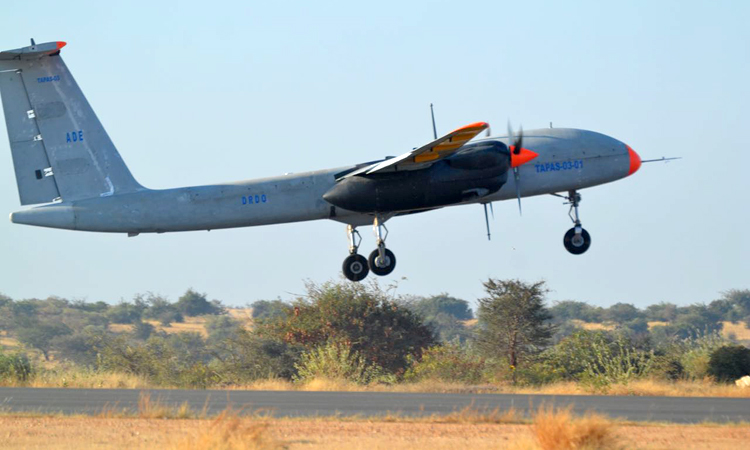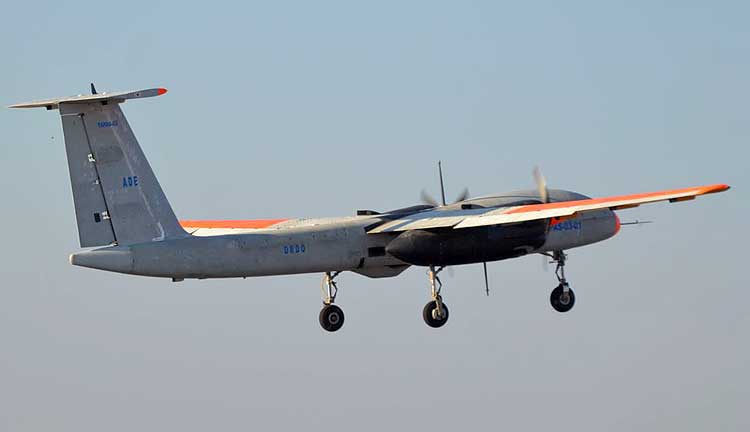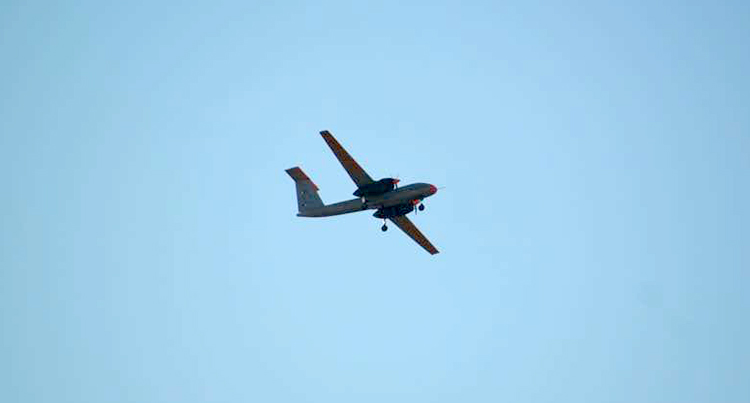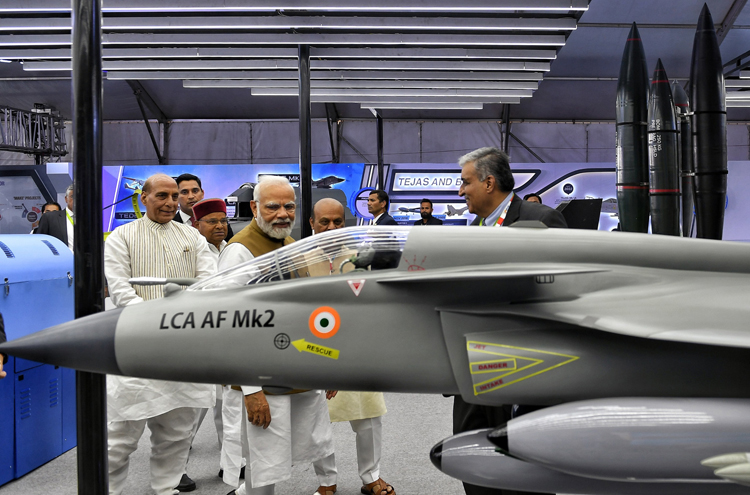INDIAN ARMED FORCES CHIEFS ON OUR RELENTLESS AND FOCUSED PUBLISHING EFFORTS

The insightful articles, inspiring narrations and analytical perspectives presented by the Editorial Team, establish an alluring connect with the reader. My compliments and best wishes to SP Guide Publications.

"Over the past 60 years, the growth of SP Guide Publications has mirrored the rising stature of Indian Navy. Its well-researched and informative magazines on Defence and Aerospace sector have served to shape an educated opinion of our military personnel, policy makers and the public alike. I wish SP's Publication team continued success, fair winds and following seas in all future endeavour!"

Since, its inception in 1964, SP Guide Publications has consistently demonstrated commitment to high-quality journalism in the aerospace and defence sectors, earning a well-deserved reputation as Asia's largest media house in this domain. I wish SP Guide Publications continued success in its pursuit of excellence.
TAPAS UAV and Tejas Fighter
India's Cutting-Edge TAPAS BH-201 UAV Prepares for Crucial User Trials, Enhancing Aerial Surveillance Capabilities
 |
The Author is Former Director General of Information Systems and A Special Forces Veteran, Indian Army |

News reports of August 9, 2023 indicate that the indigenous Tactical Airborne Platform for Aerial Surveillance (TAPAS) Beyond Horizon-201 (BH-201) UAV (also termed Rustom-II until 2016) is to undergo user trials in later half of August 2023 at ATR Chitradurga. The TAPAS BH-201 UAV will boost India’s aerial surveillance capabilities. Its development has been undertaken to meet the Intelligence, Surveillance, Target Acquisition, Tracking and Reconnaissance (ISTAR) requirements of the Armed Forces.
The TAPAS BH-201 is a medium-altitude long endurance (MALE) unmanned aerial vehicle (UAV) under development by the Aeronautical Development Establishment (ADE) of the Defence Research and Development Organisation (DRDO) on lines of the General Atomics MQ-1 Predator of the US.
In October 2010, the DRDO expressed confidence to replicate the MQ-1 Predator as ‘Rustom’’. In February 2012, ADE Director P.S. Krishnan stated that designing of ‘Rustom-II’ has been completed, purchase orders have been placed, and the ADE is on schedule to fly for the first time in February 2014.
From Rustom to TAPAS, India's homegrown UAVs soar to new heights, paving the way for ISTAR excellence
Subsequently, the ADE announced that in contrast to Rustom-I, the next generation version is equipped with enhanced aerodynamic configuration, digital flight control, navigation system, communication intelligence, medium and long-range electro-optic payloads and synthetic aperture radar that will enable it to see through the clouds. Rustom-II is capable of carrying different combinations of payloads depending on the mission objectives including electronic intelligence systems and situational awareness systems. It has a satellite communication link to relay situations in the battle theatre on a real time basis.

In September 2013, the Rustom-II began full power taxi trials at the Kolar airfield near Bengaluru. TAPAS-BH-201 eventually had a successful maiden flight on November 16, 2016 at Challakere, in district Chitradurga of Karnataka. It was decided to produce 10 such UAVs “within one year”; nine prototypes more advanced than the initial one would follow for testing prior to the beginning of certification process. There was news of Rustom-II using power plant of Austro Engine but there was no confirmation from the DRDO.
On November 13, 2021, TAPAS UAV demonstrated autonomous take-off and landing capability using GPS-aided GEO augmented navigation (GAGAN). On December 16, 2021, the UAV crossed 25,000 feet and 10 hours endurance, in March 2022, it flew at 28,000 feet for 18 hours. In May 2022, the TAPAS-BH-201 was handed over to Hindustan Aeronautics Limited (HAL) and Bharat Electronics Limited (BEL) for limited production. The UAV flew at Aero India 2023 during public demonstrations. On June 27, 2023, DRDO demonstrated the 200th flight of TAPAS to the tri-services team for the first time at ATR Chitradurga.
TAPAS BH-201 UAV clocks 200th successful flight, showcasing unparalleled performance
The TAPAS-BH-201 UAV categorised as a MALE drone has an operating altitude of 30,000 feet and an endurance of 24 hours. Its capabilities extend further with the integration of high-grade military Electro-Optical (EO) and Synthetic Aperture Radar (SAR) payloads. These advanced payloads promise to dramatically enhance the quality of images ensuring optimal performance for ISTAR operations across various terrains. The Rustom/TAPAS project was initially sanctioned at a cost of 1,540.74 crore but was later revised to 1,786 crore as of 2022.

The IAF and the Indian Army will be collaborating in the user trials later this month. The IAF would reportedly be receiving the largest number of TAPAS UAVs. The collective order for the TAPAS BH-201 UAVs is expected to be approximately 97 units. The ‘Make in India’ project is valued at over 11,000 crore and includes various surveillance pods and sensors tailored to meet the specific requirements of the Armed Forces.
India and the US have inked a $3 billion deal for 31 High Altitude Long Endurance (HALE) UAVs, of which the Navy will get 15 SeaGuardian drones, while the Army and the IAF are to get eight each of the SkyGuardian version. The TAPAS BH-201 UAV no doubt will boost the surveillance capabilities of the Armed Forces. At the same time, it would be prudent to examine the following issues: could the user trials of TAPAS BH-201 have been held in an earlier timeframe considering that the 10 prototypes were to be developed “within one year” of the successful maiden flight on November 16, 2016; should we have gone for a HALE TAPAS UAV keeping it safe from most air defence systems of our enemies; could the endurance have been improved beyond 24 hours in keeping with global trends for valid reasons, and: should it have been armed to immediately take on targets spotted?
LCA Tejas MK-2, India's indigenous fighter jet is poised to replace the ageing MiG-29s on induction
Concurrently, there is news that the IAF has had to embark on a plan to extend the service life of its MiG-29 fighter fleet. This is being progressed through a comprehensive overhaul process termed as the ‘Second Life Extension’ programme. This has been necessitated because the development and production of the Tejas MK-2 fighters, which were planned to replace the ageing MiG-29 fighters, has been delayed. The IAF had planned to retire all MiG-29s by 2027 but the decision had to be reevaluated. As of now, the Tejas MK-2 fighters on induction in 2029 will first start replacing the IAF’s SEPECAT Jaguar attack aircraft. Subsequently, from 2035 onwards, the Tejas MK-2 is expected to gradually take over from the French Mirage 2000 and MiG-29UPG.

The ‘Second Life Extension’ programme is to extend the operational lifespan of the MiG-29UPG fighters until 2037. This initiative is reportedly being undertaken independently by the IAF. The 11th Repair Plant of the IAF’s Logistics Command, situated within the confines of Nasik Airport is where this programme will be undertaken. The 11th Repair Plant has a specialised focus on the maintenance and repair of Russian and Soviet equipment, making it uniquely qualified for this task. The time schedule of completion of the programme is not known.
The MiG-29 fighter aircraft were inducted into the IAF in 1986. The Indian MiG-29s, also known as the MiG-29UPG, are upgraded versions of the base Soviet and Russian MiG-29s. The upgrades include a new avionics suite, improved radar, and increased fuel capacity. These upgrades allow the Indian MiG-29s to operate more effectively in modern air combat scenarios. Another key difference between the Indian MiG-29UPGs and the base models is the addition of a new engine. The MiG-29UPGs are equipped with the RD-33MK engine, which provides increased thrust and fuel efficiency. This engine also allows the Indian MiG-29s to operate at higher altitudes and speeds than the base models. There have been 23 MiG-29 crashes to-date according to the data base.





